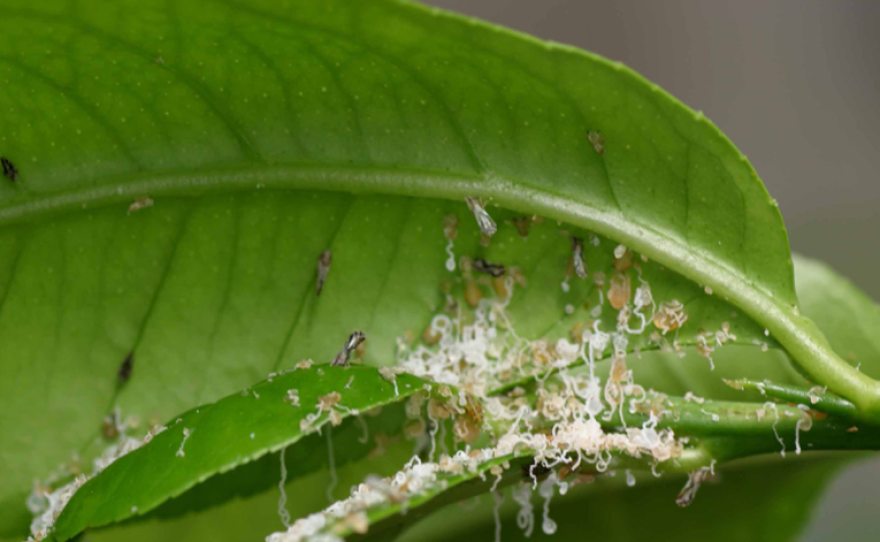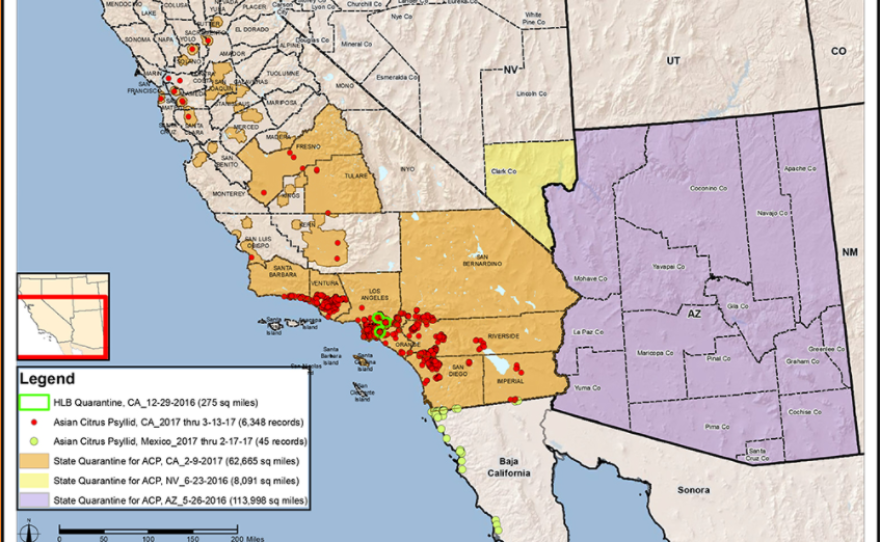The Board of Supervisors voted Wednesday to form a special district to combat a pest that could threaten San Diego County's $126 million citrus crop.
The district will provide legal authority for efforts to eradicate the Asian citrus psyllid, which can transmit Huanglongbing, considered to be the world's most destructive citrus disease.
RELATED: Battling A Small Pest To Keep California Citrus Flourishing
The county is infested with and under quarantine for the pest, but the disease has not been found locally, according to county documents. Known as HLB or citrus greening disease, the bacteria has been located in eastern and southern portions of Los Angeles County.

While not harmful to humans, HLB affects the yield, quality and market value of citrus fruit, and causes trees to die early. Over the last five years in Florida, HLB is estimated to have caused the loss of more than 6,600 jobs, over $1.3 billion in lost revenue to the citrus industry and the loss of roughly $3.6 billion in total economic activity.
County officials said commercial growers who own 80 percent of the region's 4,500 or so of citrus growing acres signed a petition calling for creation of the district. The land is in Borrego Springs, Pauma Valley and San Pasqual Valley.
The supervisors will hear any protests against creation of the district and select its directors at their May 3 meeting. The district, funded by the landowners, would then come up with a pest management plan, and develop a budget and assessment system.

According to the website CaliforniaCitrusThreat.org, the Asian citrus psyllidi is brown, about 1/8 of an inch long, and produces a white, waxy substance and causes a sooty mold to form on leaves. When the pest feeds, it can cause leaves to become twisted.
Leaves on trees infected by HLB can became yellowed and fruit can stay green and fail to ripen. Ants protect the pest, so they should also be kept away from citrus trees, according to the website.
The item was part of the supervisors' consent calendar, which passed without comment on a 4-0 vote, with Ron Roberts absent.





